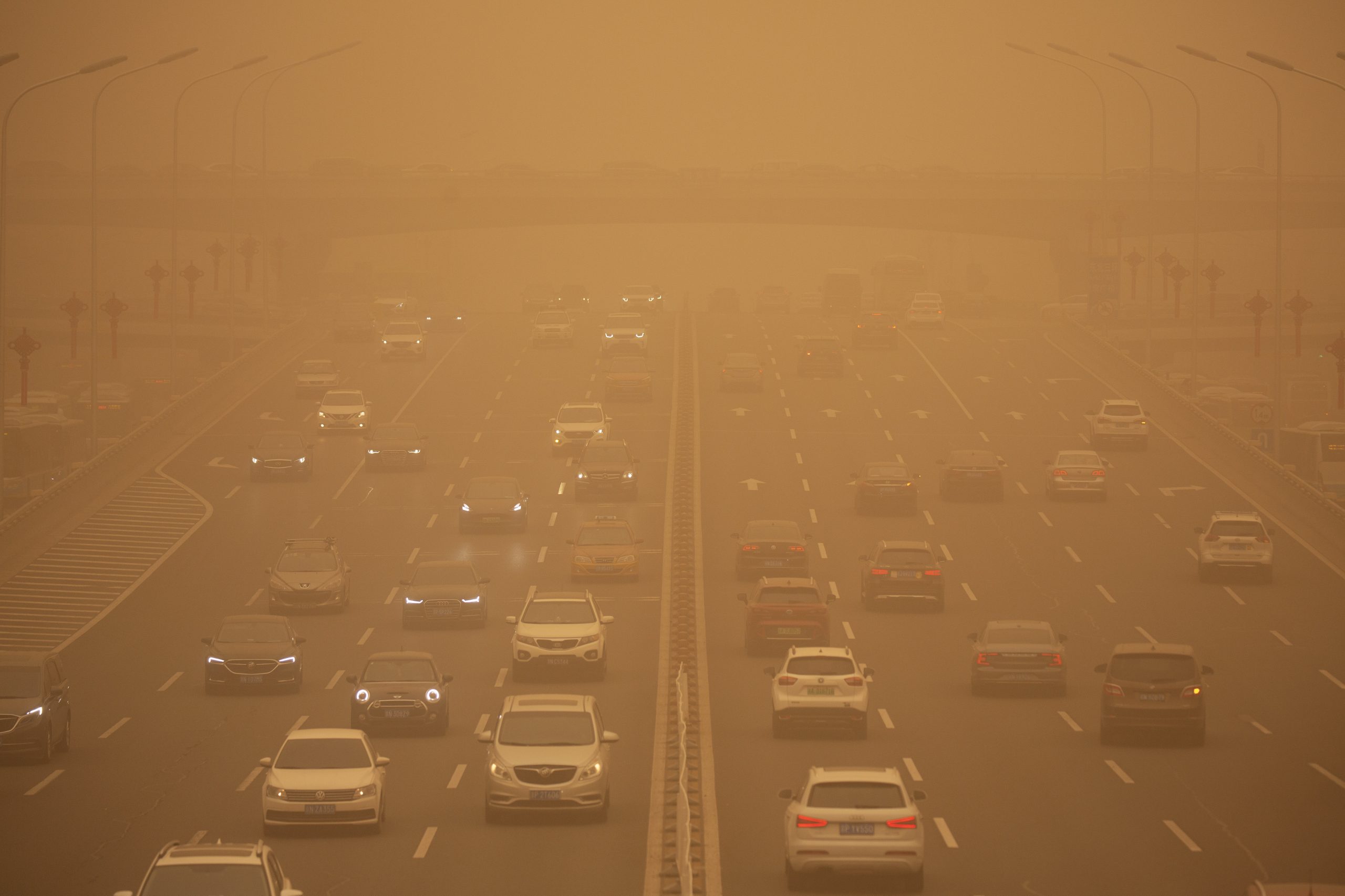A sandstorm rocked Beijing on Monday, resulting in a thick plume of dust that turned skies orange and limited visibility.
Photos from the Chinese capital show cars and commuters traveling through an orange haze as the World Air Quality Index reported 655 micrograms per cubic meter of particulate, over 26 times higher than the 25 micrograms the organization deems safe.
The dust cloud led to much of the nation receiving a “hazardous” rating by the index. At least 12 of the country’s provinces have been affected by the weather event.
“In some places, there are strong sandstorms with visibility of less than 500 meters (1,640 feet),” said the China Meteorological Administration in a statement on Monday. “This is also the strongest dust and sand weather affecting China in almost 10 years.”

WHAT US WAR WITH CHINA ABOUT TAIWAN WOULD LOOK LIKE
The storm originated in Mongolia, and Chinese state-run media said it has killed at least six people and left 81 missing.
In Beijing, which is home to nearly 22 million residents, drivers turned on headlights in the middle of the day to commute, while others donned masks and utilized hoods to block the sand.

At least 400 flights have been canceled, and the public has been advised to stay indoors until the storm passes. Schools have also suspended outdoor activities.
READ MORE FROM THE WASHINGTON EXAMINER BY CLICKING HERE
The clouds, which used to be more frequent, have dwindled in number after the Chinese government in the 2000s committed billions of dollars worth of investment toward preventing sandstorms through reforestation, satellite monitoring, and other ecological processes. In the 1950s, the country experienced an average of 26 days under a plume, while after 2010, the nation reported just three per year.
